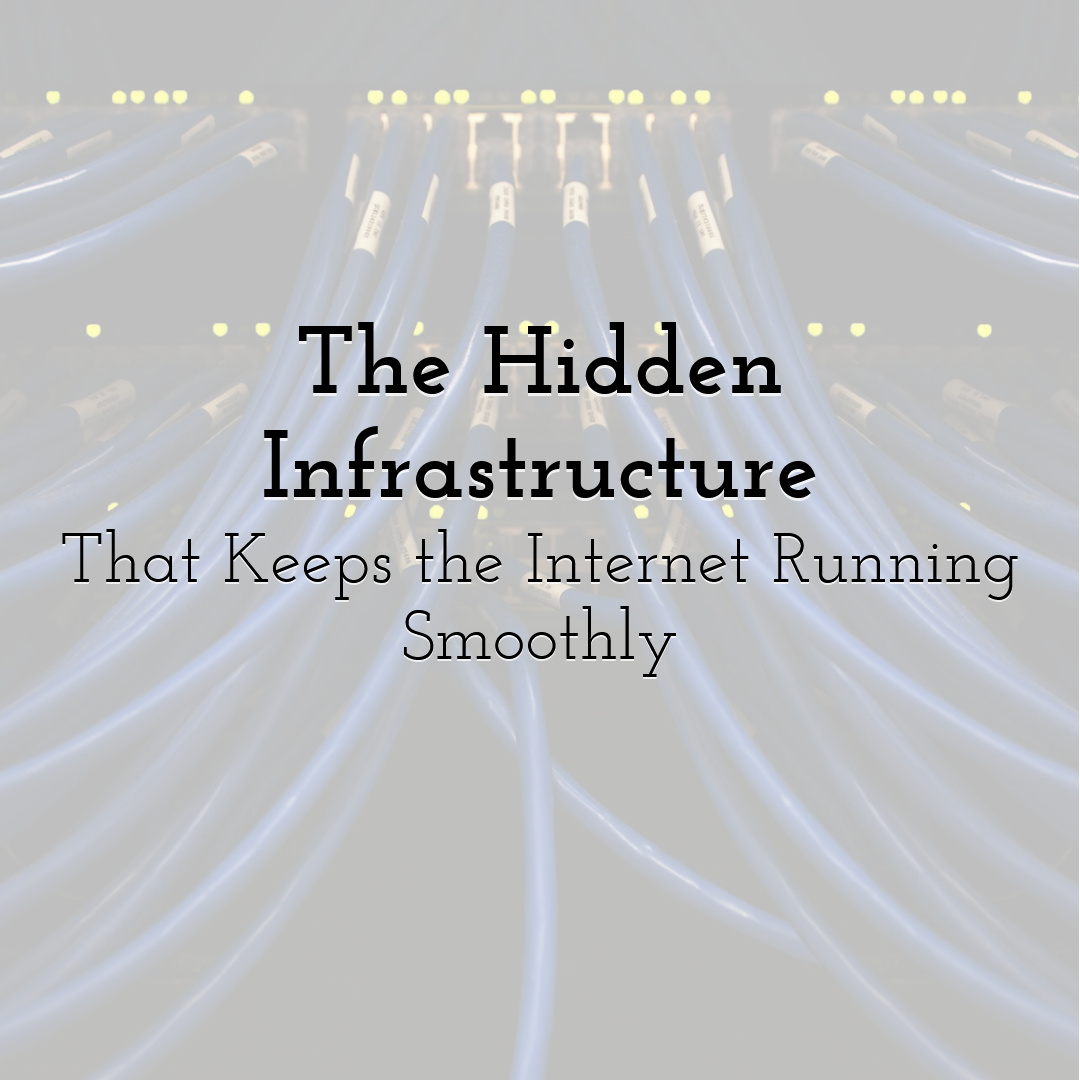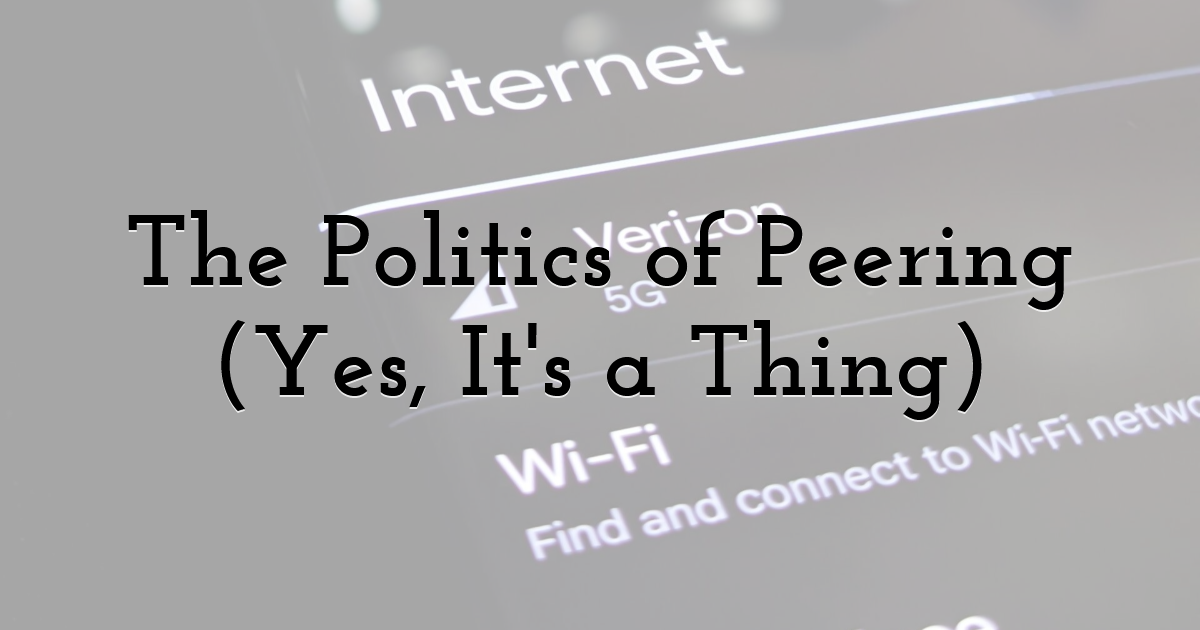The Hidden Infrastructure That Keeps the Internet Running Smoothly

Picture this: 127,000 YouTube videos streaming right now, 9,000 tweets zipping across servers, and somehow it all just works. Most of us never think about what's happening behind that spinning loading icon. But there's an entire universe of infrastructure humming away, making sure your cat videos load without a hitch.
The backbone of the internet isn't just some cables and blinking lights. It's actually a pretty wild ecosystem of systems that somehow manage to work together without completely falling apart.
The Physical Layer You'll Never See

Here's something crazy: 550,000 miles of submarine cables snake along ocean floors, carrying 99% of international data. These fiber optic tubes (some barely thicker than your garden hose) shoot information at 186,000 miles per second. But cables are just the start of this rabbit hole.
Internet Exchange Points work like massive digital traffic circles where different networks meet up. Frankfurt's IXP pushes through 10 terabits per second, which sounds impressive until you realize it looks more like a warehouse full of server racks than something from a sci-fi movie. The reality is way less glamorous than you'd expect.
And then there's BGP (Border Gateway Protocol), basically the internet's navigation system. Every time you click something, BGP algorithms figure out the best route through millions of possible paths. It happens so fast you don't even notice, but one wrong configuration can knock entire countries offline (yes, this actually happens).
Security Layers Working Overtime

Every click, every page load triggers security checks you never see. DDoS protection systems analyze billions of data packets constantly, spotting attacks before they cause problems. And here's where it gets interesting: tools like a vpn with residential ip route your traffic through actual residential networks, making you practically invisible to tracking systems.
Certificate Authorities issue digital certificates proving websites are legit. Your browser checks these things thousands of times daily (you just never notice). The whole PKI system keeps the internet from becoming one giant phishing scam.
AI-powered intrusion detection processes petabytes of data every hour, catching weird patterns in milliseconds. Companies looking for bulletproof security can discover IPRoyal's best dedicated proxy servers to create isolated connections that keep sensitive operations locked down tight.
CDNs: Why Netflix Doesn't Buffer Anymore

Remember when streaming meant constant buffering? Content Delivery Networks fixed that by storing copies of popular stuff closer to where you live. Netflix runs something like 17,000 servers worldwide. Your latest binge-watch probably streams from a server just a few miles away, not from some distant data center.
These CDNs use machine learning to predict what people will watch next. When everyone's about to stream the World Cup final, the system pre-positions content where it'll be needed. Traffic can spike 50 times normal levels, but you won't notice because the infrastructure is already adapted.
Edge computing pushes this idea even further. Instead of sending everything to central servers, processing happens right at the network's edge. According to Gartner, 75% of enterprise data will be processed outside traditional data centers by 2025. That's what makes stuff like self-driving cars and AR glasses actually work in real-time.
DNS: The Phone Book Nobody Talks About
DNS translates "google.com" into numbers computers actually understand, usually in about 20 milliseconds. Thirteen root DNS server clusters (which are actually hundreds of machines pretending to be thirteen) handle 150 billion queries daily. It's mind-boggling that this even works.
Anycast technology lets identical IP addresses exist in multiple spots simultaneously. Your DNS query automatically hits the nearest server without you doing anything. Pretty clever, right?
But here's the catch: only 27% of domains use DNSSEC security extensions. That leaves millions vulnerable to DNS hijacking, where attackers redirect you to fake sites. The infrastructure exists to prevent this; most people just don't use it.
The Politics of Peering (Yes, It's a Thing)

ISPs negotiate these complex "peering agreements" that determine how traffic flows between networks. Big players like AT&T exchange traffic for free, while smaller networks pay transit fees. These backroom deals shape your internet experience more than any technology.
Netflix pays ISPs directly for fast lanes to your house. Without these deals, your shows would buffer constantly during prime time. The 2014 Netflix-Comcast dispute proved this when millions experienced terrible streaming until money changed hands. Research from MIT shows these business relationships matter more than actual technical capabilities.
Building for Disaster
Internet engineers assume everything will break eventually. That's why there's so much redundancy built in. Submarine cables snap about 200 times yearly (ship anchors are usually the culprit), but you never notice because traffic instantly reroutes.
Major providers keep "dark fiber" ready for emergencies. Google spreads its 23 data centers across four continents, each ready to take over if others fail. This redundancy costs billions but prevents the apocalyptic outages that would otherwise happen regularly.
When one path fails, Autonomous System Numbers enable automatic rerouting through backup routes. It's like having multiple GPS routes ready before your main road gets blocked.
The Protocol Stack Making Everything Click

TCP/IP protocols let incompatible systems talk to each other. This four-layer system handles everything from physical signals to app-level stuff. Each layer works independently, so upgrading one part doesn't break everything else.
IPv6 was supposed to solve our IP address shortage with 340 undecillion unique addresses (that's a stupid amount of zeros). But twenty-six years later, we're only at 40% adoption because nobody wants to update their old systems. So we're stuck running both protocols simultaneously like some technological Frankenstein.
QoS mechanisms make sure your Zoom call gets priority over someone's torrent download. The IEEE reports these traffic management systems now use machine learning to predict and adjust for usage patterns before congestion happens.
What's Coming Next
Quantum networking promises unhackable communications using quantum entanglement (yeah, the spooky physics stuff). China's already demonstrating 1,200-kilometer quantum connections via satellite. It's still decades from your laptop, but the implications are huge.
Software-defined networking lets engineers reconfigure networks through code instead of touching hardware. Networks can adapt instantly to changing conditions, optimizing themselves without human intervention.
The invisible infrastructure gets more complex every year, yet somehow becomes more reliable. Next-gen tech will hide even more complexity while delivering capabilities we can't imagine yet. Understanding these hidden systems makes you appreciate the absolute miracle that is clicking a link and having it just work.
Until next time, Be creative! - Pix'sTory


